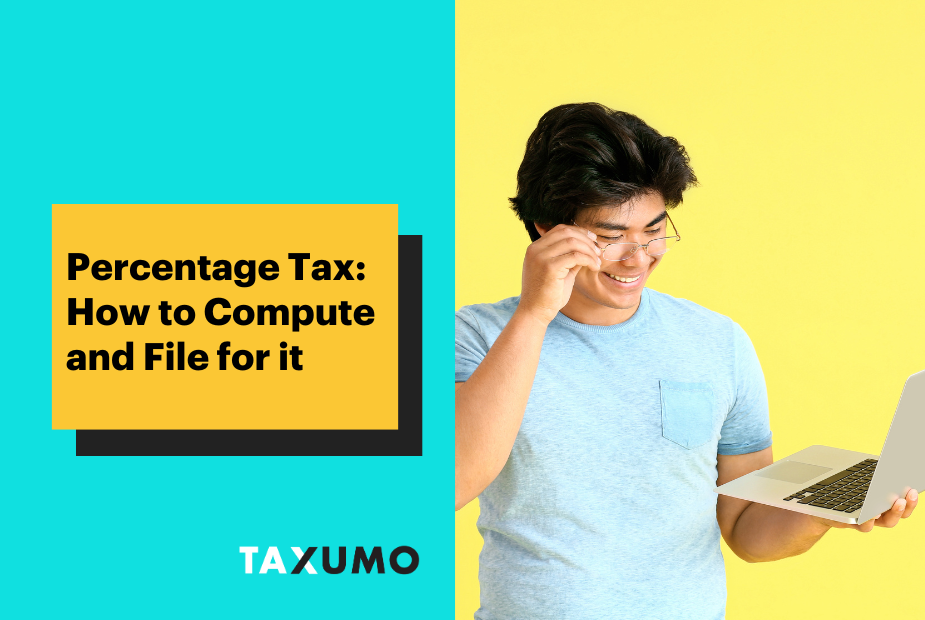Percentage Tax in the Philippines is a tax applied to certain transactions. It’s important to note that this is not an income tax—it’s a separate tax specifically tied directly to your sales or revenue, also known as a sales tax. But don’t worry, it’s simple to calculate and file, and this guide will help you understand the whole process!

Do You Qualify for Percentage Tax?
Short answer: If you were able to successfully opt in to the 8% Flat Income Tax Rate, then you’re exempted from filing the percentage tax form. You can learn more about how to do that in this article: How to Avail of the 8% Income Tax Rate on Gross Sales/Receipts
Now if you are VAT, that also means you file VAT instead of Percentage Tax (there are other percentage taxes for more complicated use cases, such as for financial institutions, but we won’t cover that here).
Now if you are a non-VAT entity and you opted for the Optional Standard Deduction (OSD) or itemized deduction method then you are required to file it. To check if you need to pay this tax you need to look at 2 things:
1. Look at your Certificate of Registration (COR):
Check if your business has been assigned to file Form 2551Q. This is the form you’ll need for Percentage Tax.
2. Who files Form 2551Q?
Form 2551Q is required for businesses that make sales or income and earn below the VAT threshold (P3 million annually). If this form is listed in your COR, then you are likely required to file for Percentage Tax.
Calculating for Percentage Tax
Once you’ve confirmed that you need to file it, the next step is to calculate.
For Percentage Tax, it is always 3% of your gross sales or receipts. Your gross sales are simply the total amount of money your business earns before any expenses or deductions. Remember: if you have clients that withhold a certain amount of their payment to you, you also need to include the amount withheld as part of gross sales.
Filing for 2551Q
After calculating your tax, you need to file Form 2551Q with the Bureau of Internal Revenue (BIR). You usually file this form quarterly (every 3 months, so 4 times in a taxable year), and you need to do it within the deadlines set by the BIR.
Keep Your Records Organized
It’s important to keep a copy of all your forms and payments. Also, make sure to consolidate all your tax forms, including the Form 2551Q, for easier tracking and filing.
Tip: When you receive the discrepancy report, having organized records will help you show that you did file on time. You can simply present the supporting documents to clear up any confusion. Taxumo makes that easy because all your filings done through Taxumo can be easily extracted ANY TIME — it’s all in your control!
By following these simple steps, you can easily manage your tax filings and avoid unnecessary stress.
